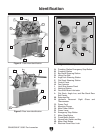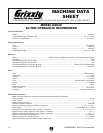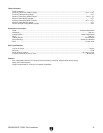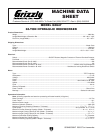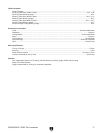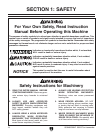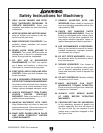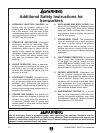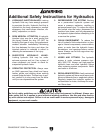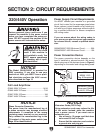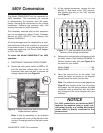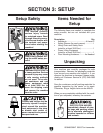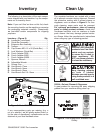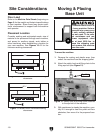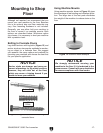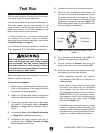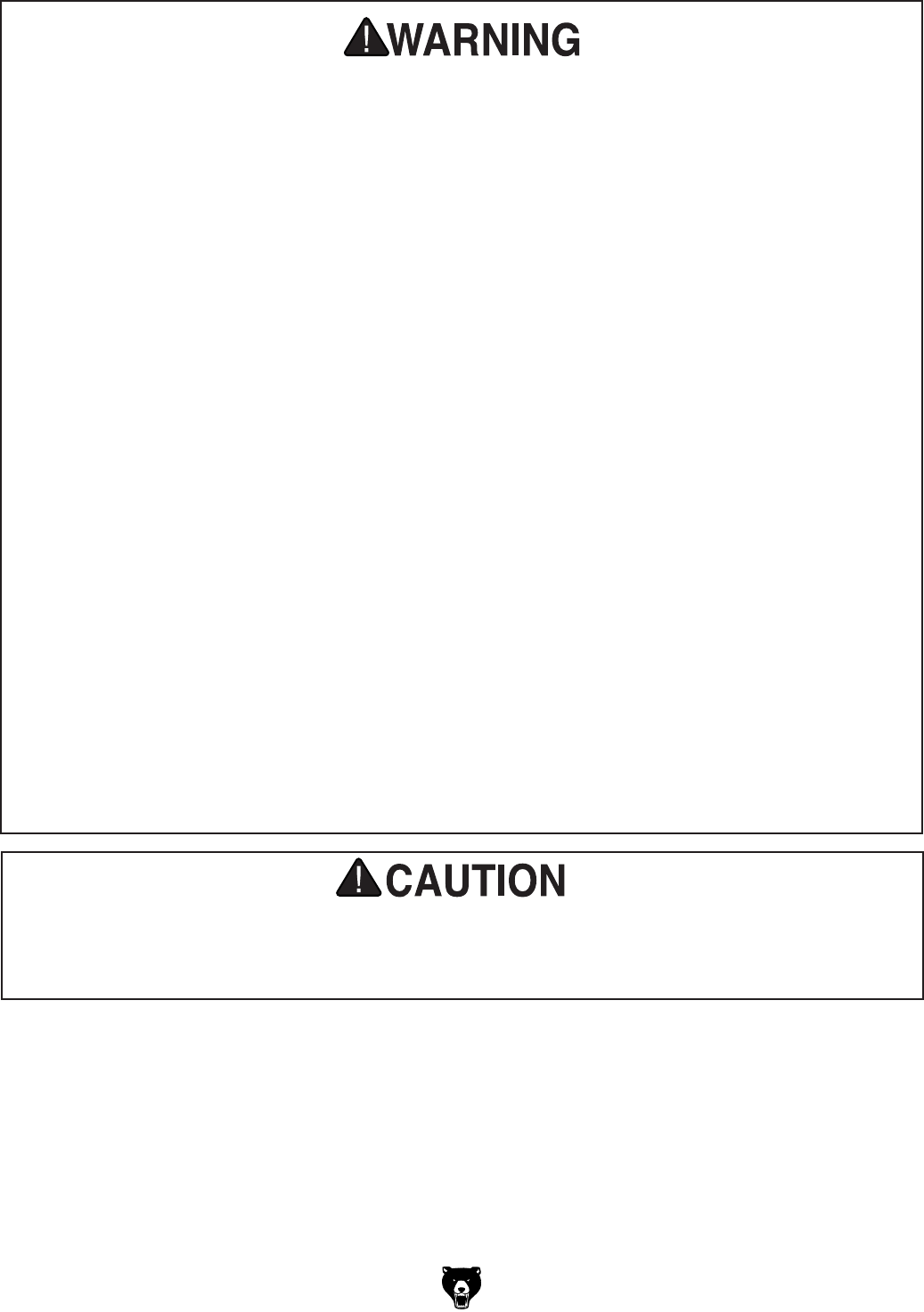
G0646/G0647 50/65 Ton Ironworker
-11-
No list of safety guidelines can be complete. Every shop environment is different. Always con-
sider safety first, as it applies to your individual working conditions. Use this and other machin
-
ery with caution and respect. Failure to do so could result in serious personal injury, damage to
equipment, or poor work results.
Additional Safety Instructions for Hydraulics
1. HYDRAULIC INJECTION INJURY. Leaking
hydraulic fluid may have enough pressure
to penetrate the skin. Hydraulic fluid that is
injected into the body represents a medical
emergency that could cause infection, dis
-
ability, amputation, or death.
2. SEEK MEDICAL ATTENTION. A hydraulic
injection injury may be a small wound that
has barely broken the skin. DO NOT be
fooled by this type of injury. Get professional
medical attention immediately! Minimizing
the time between the injury and when the
injected material is removed is critical to
reducing the seriousness of the injury.
3. SUSPECTED HYDRAULIC LEAKS.
Leaking hydraulic fluid may be under
extreme pressure and hot. Use a piece of
clean cardboard—not hands—to check for
suspected hydraulic leaks.
4. OPERATOR PROTECTION. Always wear
an ANSI approved face shield and heavy
leather gloves and clothing when working
around hydraulic leaks. The best way to pro
-
tect yourself is to stay away from the leaks
until you can depressurize the system.
5. DEPRESSURIZE THE SYSTEM.
Working
on a pressurized hydraulic system can
cause a pressure explosion, resulting in
serious personal injury. To reduce the risk of
this hazard, stop the motor, disconnect the
machine from power, and fully depressurize
the hydraulic system before attempting to fix
or service the system.
6. CLEAN ENVIRONMENT. To reduce the
risk of hydraulic fluid contamination or dam
-
age to internal components, remove debris,
grime, or water from the hydraulic hoses,
connections, and openings before mainte
-
nance. Always use lint-free rags when wip
-
ing components.
7. HOSES AND FITTINGS. The hydraulic
system is under extreme pressure—typi
-
cally 3000 PSI. Always use high-pressure
hydraulic hose and steel hydraulic fittings
when replacing system components. Never
use brass or aluminum.
8. REGULAR INSPECTION. A well-maintained
hydraulic system will have much fewer prob
-
lems and hazards than a neglected system.
Regularly inspect the hydraulic system for
contamination or leaks, and keep the reser
-
voir filters clean.



